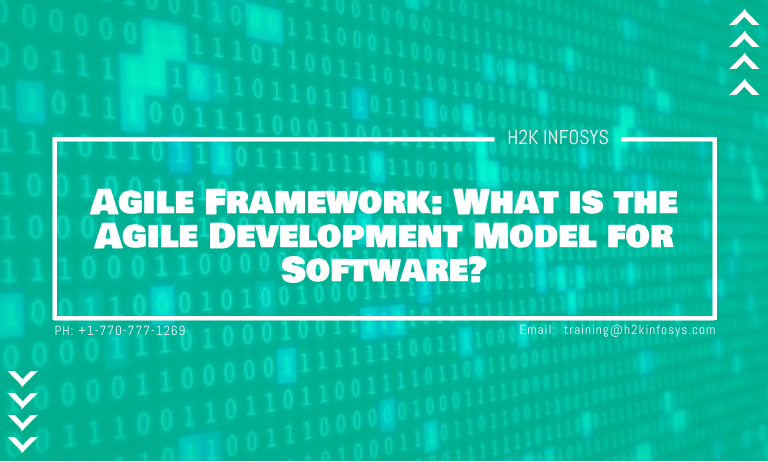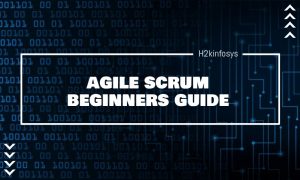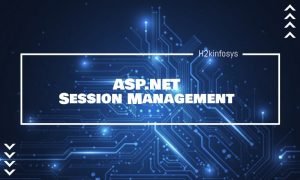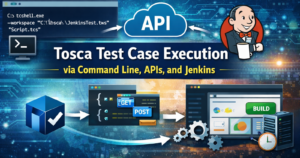Introduction
The Agile Framework is a strategy that advances a continuous cycle of improvement and testing throughout the lifespan of the task product improvement. Throughout the Agile Framework, all development and testing practices are simultaneous, unlike the waterfall method.
Agile Framework
Agile Software Development
The Agile Framework for developing products is among the easiest and most productive methods for transforming a vision for a market requirement through software products. Agile is a concept used to represent a plan of action to develop applications that incorporate continuous planning, research, growth, coordination of teams, and new techniques. This promotes flexible approaches to transition.
The Agile Framework of application development relies on four primary principles:
- Interactions of individuals and teams over tools and techniques
- Functional applications over extensive paperwork
- Customer cooperation in negotiating contracts
- Reacting to transition, according to a schedule
Waterfall Model Comparison with Agile Model
The Agile and Waterfall models are two separate approaches for developing applications. Although they are distinct in their method, both approaches are often useful improvements depending on the criteria and the scope of a project.
| Waterfall Model | Agile Model |
| Software development flows concurrently from the starting point to the end. | The Agile approach suggests an iterative and incremental development approach to software design. |
| The design phase does not segment itself into individual models. | The agile approach divides individual templates on which designers focus. |
| The client can see the project only at the end of the project. | The client has an early and regular chance to inspect the project and give suggestions and make improvements. |
| The Waterfall method is safer because it is so plan-oriented. | The Agile model is unstructured as compared to the waterfall method. |
| It is possible to estimate and complete all forms of programs. | This model rapidly enforces small-scale projects. However, it does not estimate the development time for large-scale projects. |
| The testing process tests the entire product at the end and if this process finds any critical errors or if there is any need for a change, the project must start from the beginning. | It is possible to correct a mistake in the middle of a project. |
| The phase of development is phase-wise; the phase much greater than iteration. Each stage concludes with the next step being outlined in detail. | The development phase is iterative, and the project conducts in a quick iteration of 2-4 weeks. |
| This model rates documentation as a high priority and can also prepare personnel and update software from another team. | Less attention is given to documentation than to build applications. |
| The testing process is carried out only after the development phase since individual modules are not entirely usable. | Each iteration has its phase of testing. Any time new functions or logic are released, it enables regression testing to be applied. |
| After the long deployment process, all developed features are delivered at once. | After the iteration, the software’s functions are provided to the client in agile testing. New functionality can be used right after delivery. It’s helpful when you’re in close contact with clients. |
| Testers function independently from developers, | The testing team and Software Developers collaborate. |
| After the project, it executes user acceptance. | It completes user acceptance at the end of each sprint. |
| The software Developer does not communicate regarding the planning and requirement process. That results in time-delays between developers and testers. | Close contact with developers and collaborative review of specifications and preparation is needed. |
Agile Process
An Agile Framework helps easily deliver efficient processes in software development. There are different Agile Frameworks used in agile testing, including:
Agile methodological framework
The different agile approaches present in agile testing are:
- Scrum
Scrum is the most widely used Agile Framework in the development of products, particularly software. However, Scrum is a general project management structure applicable to any project with strict timelines and complex requirements. Projects in Scrum proceed in iterations known as sprints, usually lasting 2-4 weeks.
Product owner: The owner of the product is the primary stakeholder in the project and speaks to users, clients, and others in the process. Someone from sales management or promotion, a key stakeholder, or a key customer is always the product owner.
Scrum Master: The Scrum Master is in charge of ensuring that the group works efficiently within the Agile Framework. Scrum Master does it by using the Scrum system, eliminating barriers to success, and defending the team from the outside, etc.
Team members: The team performs its job and classifies the job to end the sprint or phase.
Product Backlog: Product backlog is a directory where specifications are recorded for each release with information on the number of desired requirements to be accomplished. The product owner should manage and align it based on their priority, and it should be circulated to the scrum team members. The team members may also order a new inclusion or alteration or omission of specifications.

Scrum Practices
Practices are illustrated in the below figure
Scrum events
- Sprint: Incremental timelines where there is a target reached. The duration should not extend four weeks and is constant within the entire phase of growth.
- Sprint planning: Where the whole Scrum group gathers at the start of a Sprint to get ready for the next sprint.
- Daily Scrum: A 15-minute session that will be held concurrently each sprint day, reviewing the outcomes of the previous day and the targets for the next day.
- Sprint review: By the conclusion of every sprint, an informal gathering where the Scrum team introduces their improvement to the shareholders and shares input.
- Sprint retrospective: A session at which the Scrum team reports on the prior Sprint proceedings and proposes new modifications for the upcoming Sprint.
- Extreme Programming (XP)
Extreme Programming is a formal approach with a system of common principles, standards, and policies for the effective creation of high-quality software, providing the highest benefit to users. The Traditional Extreme Programming methodology makes it possible for developers to conduct a test-first approach and refactor code. The test-first approach asks developers to build test cases before coding, while the re-factoring methodology allows them to review code periodically. Extreme programming aims to reduce the cost of specification updates by having a range of fast, rather than long, development periods.
Extreme programming’s process and functions
Extreme Programming is an Agile Framework designed to produce high-quality software through frequent releases in short development cycles, improving productivity and introducing checkpoints to adapt to changing requirements.
- Planning
The first step is where the client conducts a meeting with the development team and explains the specifications based on user stories. The team then analyzes the stories and designs a release schedule that splits into iterations sufficient to cover part by part the features. If you cannot guess one or more of the tales, so-called spikes can be made, so further studies are required.
- Managing
This process promotes the workspace to be open and to remove the barriers that separate individuals. Establishing a tempo is the most complete and ready to create apps for each version. This process often allows people to switch around to prevent a significant lack of information and coding problems. Most participants are not contributing, but rather attend to hear the result. There is a great deal of developer time to achieve a negligible volume of interaction.
- Designing:
This process promotes simplicity in the design of a model. A basic model takes less time as compared to a complex one. This process needs Spike solutions to difficult technical and design issues. The designing process demands that features should not be added at an early stage.
- Coding:
The coding process requires that the client should always be present and should be part of the team to help the development team and assure that code is according to agreed standards. It should make the test cases before creating the code as it will be much easier to develop code later.
- Testing:
All programs must withstand unit testing, the Extreme Programming cornerstones are unit tests. It creates tests when an error is detected to prevent it from recurring. From user stories, it develops acceptance tests. It would convert the user stories chosen during the iteration preparation meeting into acceptance checks during the iteration.
Extreme Programming Lifecycle
- Crystal Development Framework
The Crystal Development Framework includes three concepts.
- Chartering: it comprises the formation of a planning team, carries out a preliminary workable study, a strategy formulation, and perfection of the development approach.
- Cyclic delivery: The primary process of production comprises two or three stages of delivery:
- The group transforms and revises the plan for release
- Executes a collection of parameters by implementing iterations into one or more software checks.
- This stage includes the distribution of the combined product to actual consumers.
- Examination of the project strategy and the adopted approach for growth
- Wrap Up: Deployment into the user area, post-deployment feedback, and reflections are the tasks conducted in this process.
- Dynamic Software Development Method (DSDM)
DSDM is an approach to software development for Rapid Application Development (RAD) that offers an agile platform for project execution. The key feature of DSDM is that consumers need to be engaged, and the decision-making authority is provided to the teams. With DSDM, regular product distribution becomes the active target. The processes used in DSDM are:
- Time Boxing: Allocation of a fixed amount of time to complete each aspect of the overall project.
- MoSCoW Rules
- Modeling
The DSDM initiative comprises seven stages.
- Pre-project
- Study on Feasibility
- Research of Business
- Iteration of Functional Models
- Iteration Specification and Build
- Deployment
- Post-Project
- Feature Driven Development (FDD)
This approach focuses on features of “design and development “. FDD defines very precise and brief phases of work that functions must do independently, unlike other agile approaches. It includes Domain walkthrough, model verification, promotion to build, an inspection of code and model. FDD creates a product that keeps following activities in their goal:
- Modeling domain objects
- Production by Characteristic
- Ownership Component/ Class
- Teams of Function
- Inspections
- Management of Configurations
- Periodic Builds
- Visibility of innovations and consequences
- Lean Approach of software Development
The Lean approach of software development uses the concept of ‘Just in time production’. The primary aim is to accelerate the production of applications and reduce costs. Seven phases for lean production are:
- Waste treatment
- Improved training
- Delayed interaction
- Strengthen the squad
- Credibility development
- Maximize the entire framework
- Kanban Approach
In Agile project management, Kanban is a highly visual approach widely used. It displays the workflow phase to detect any bottlenecks at an early stage to ensure the distribution of a better-quality product or service.
The general practices of Kanban are:
- Visualization
- Controlling work in progress
- Flow Management
- Explicit policymaking
- Feedback loops usage
- Collective or experimental transformation
Agile criteria:
Important factors that determine excellent use of Agile management are:
- An additional number of unit tests
- Period span for completion of regular build
- Bugs in an iteration or earlier iterations
- Leakage of a production flaw
- Drag factor
- Hours of effort that may not lead to the sprint target
- By decreasing the number of mutual resources will increase the drag effect, reducing the number of non-contributing jobs.
- Drag factor percentage can improve new predictions -New estimation = (old estimation + drag factor)
- Velocity
- Number of backlogs (user stories) transformed to sprint shippable features
Agile Criteria for Success
Important metrics to track the success of an Agile Framework include:
- Unit test coverage
- Time taken to complete builds
- Bugs reported during or after iterations
- Production defects
- Drag factor and sprint velocity
- Number of backlog items converted to deliverable features
By optimizing these factors, teams can fully leverage the benefits of any Agile Framework.
Conclusion
The Agile Framework promotes flexibility, collaboration, and continuous improvement in software development. It adapts quickly to change, ensures customer involvement, and delivers value in short iterations. By embracing Agile practices like Scrum and Kanban, teams enhance productivity, reduce risks, and build high-quality products that meet evolving business and user need.

























